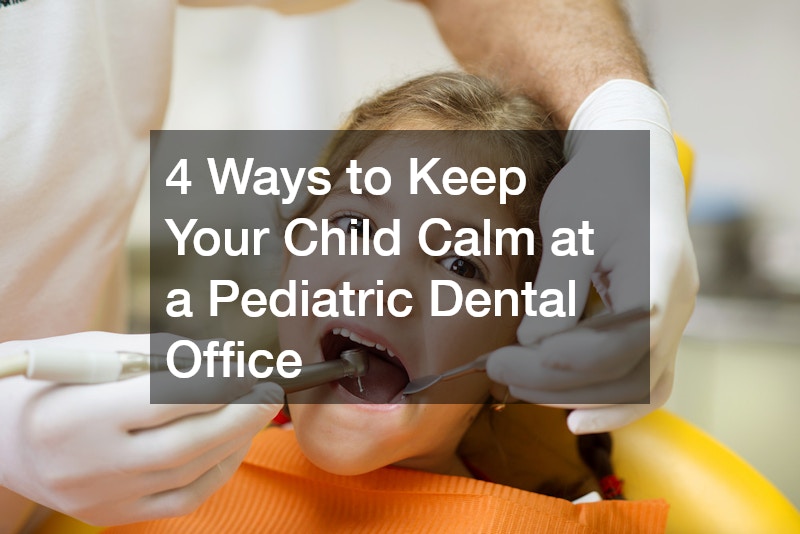
Visiting a dental office can be a stressful experience for many children, and creating a calm and positive atmosphere is essential for both the child and their caregivers. A pediatric dental office is specifically designed to cater to the needs of young patients, offering an environment that is less intimidating than a traditional dental clinic. Understanding how to help children feel comfortable during appointments can significantly impact their dental experience.
Parents and dental professionals can reduce anxiety and encourage lifelong healthy oral habits by adopting thoughtful preparation strategies, fostering a welcoming environment, and using effective communication techniques.
1. Preparing Your Child Before the Appointment
Preparation is a key factor in helping children approach dental visits with confidence. Explaining what will happen in simple, reassuring terms helps reduce fear of the unknown. When children know what to expect, they are less likely to imagine painful or frightening scenarios, which can ease tension before they even enter the office. Parents can use books, videos, or role-playing games to introduce dental tools and procedures in a friendly and familiar way.
More specifically, parents can walk their child through a typical appointment step by step, highlighting comfortable and fun aspects, such as choosing a flavored toothpaste or earning a sticker afterward. Using consistent, positive language like “the dentist will count your teeth” rather than “the dentist will look for cavities” can frame the visit as an engaging rather than scary experience. This preparation builds confidence and helps children feel more in control during the appointment.
2. Creating a Comfortable Office Environment
The pediatric dental office environment plays a crucial role in reducing anxiety. Bright, cheerful décor, kid-friendly furniture, and access to toys or books help create a welcoming space. A calm and organized office signals to children that this is a relaxing place. Beyond aesthetics, staff interactions, gentle voices, and a structured routine create a positive atmosphere that encourages cooperation.
In more specific terms, many pediatric dental offices use techniques such as having a waiting area filled with puzzles, videos, or coloring stations. Dental chairs may be decorated with fun designs, and equipment is often child-sized to reduce intimidation. Some offices even incorporate music or video screens during procedures to distract and soothe young patients. These elements help transform the dental visit into a more enjoyable and less stressful experience.
3. Using Positive Reinforcement Techniques
Positive reinforcement is an effective method to encourage calm and cooperative behavior during dental visits. Praise, rewards, and small incentives can motivate children to participate willingly in their care. When children associate dental visits with positive experiences, they are more likely to return without fear and maintain consistent oral hygiene habits. Reinforcement can be verbal, visual, or tangible, depending on what resonates most with each child.
Parents and dental staff can offer immediate praise for behaviors such as sitting still, opening the mouth, or following instructions. Small rewards like stickers, toys, or certificates of bravery can reinforce these behaviors and create a sense of accomplishment. Tracking progress over multiple visits with a reward chart can further encourage children to develop a positive relationship with dental care, making future visits smoother and less stressful.
4. Communicating Clearly During Treatment
Clear and age-appropriate communication during treatment helps children feel secure and understood. Explaining each step calmly prevents surprises and reduces anxiety. Using friendly, non-threatening language and allowing children to ask questions can empower them and give a sense of control over the situation. Communication should be supportive and patient, reinforcing that the dental team is there to help, not to scare them.
Specifically, dental staff can describe actions in a playful or relatable way, such as saying, “We are going to make your teeth sparkle” instead of “We are going to clean your teeth.” Pausing between steps, offering choices when possible, and using gestures to demonstrate what will happen next can also help children feel more comfortable. This approach builds trust and encourages cooperation, ensuring that children leave the pediatric dental office feeling proud and confident rather than anxious.
Keeping children calm at a pediatric dental office requires preparation, a supportive environment, positive reinforcement, and clear communication. By understanding young patients’ psychological and emotional needs, parents and dental professionals can create a more positive and stress-free experience. When children feel comfortable and safe, they are more likely to develop good oral hygiene habits and maintain regular dental visits. Implementing these strategies consistently helps foster trust and confidence, ensuring dental care becomes a routine, positive part of a child’s overall health journey.



